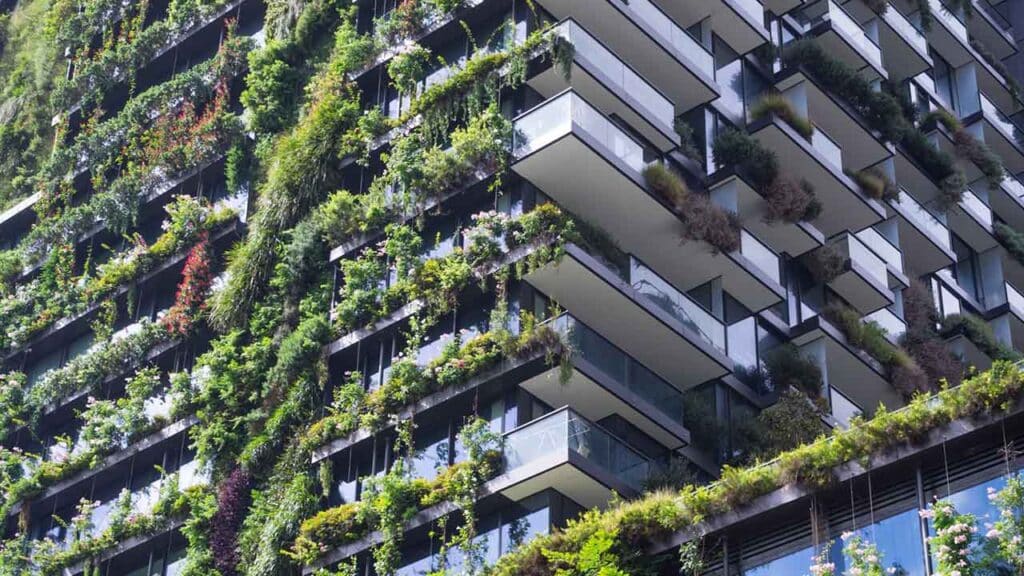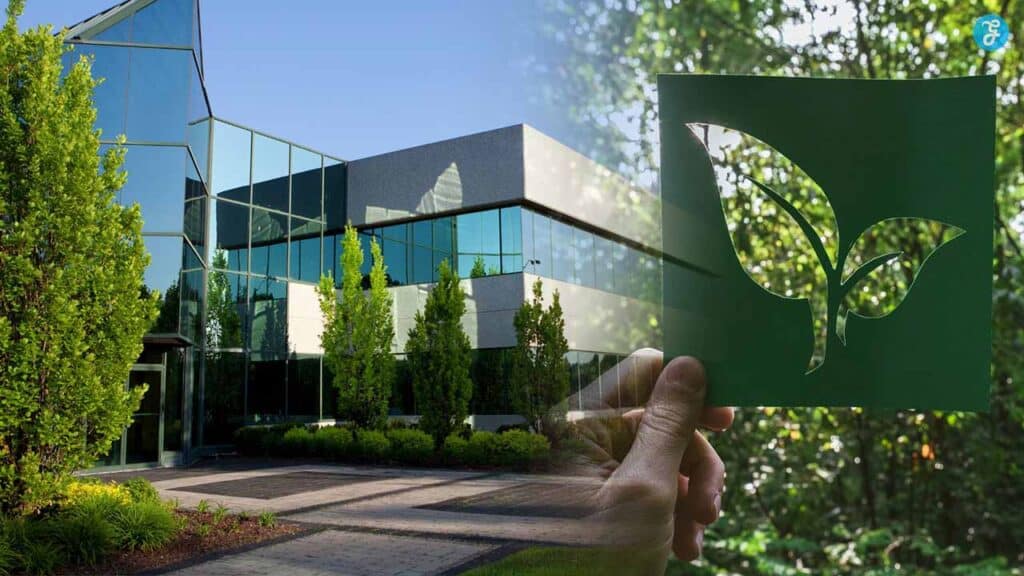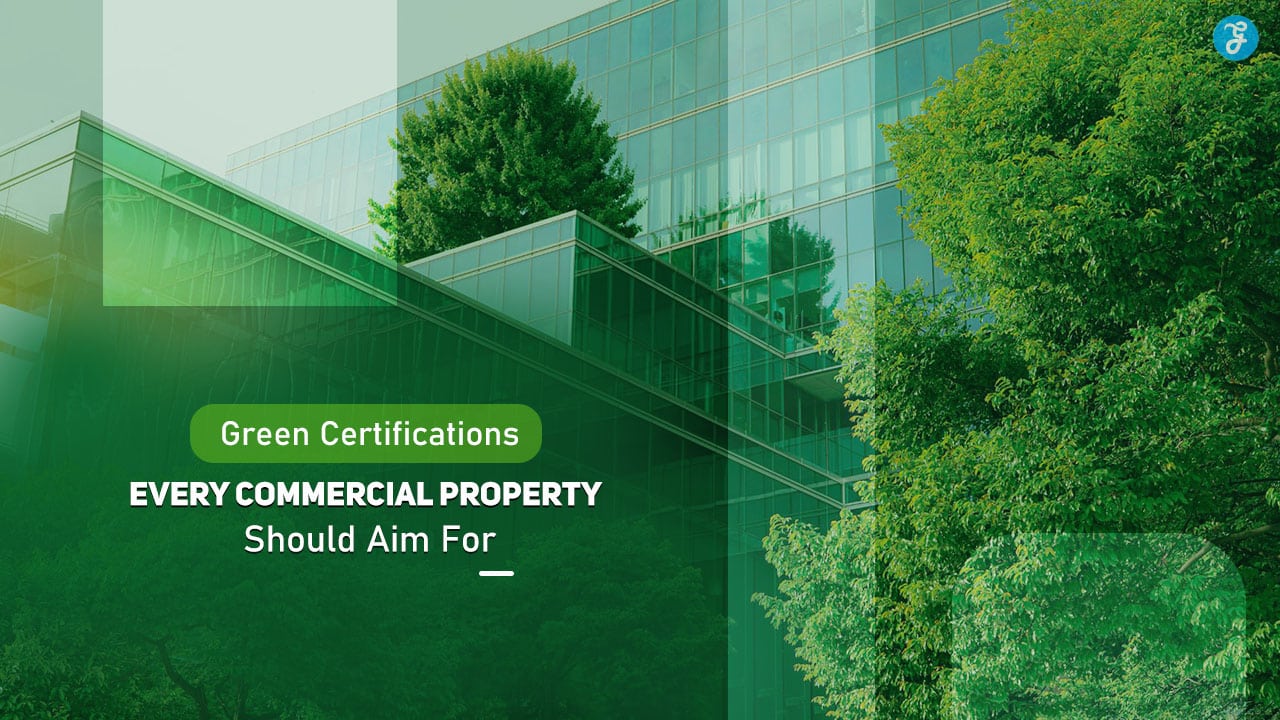Green certifications help commercial properties meet strict environmental standards, ensuring efficiency, sustainability and improved well-being for residents.
Obtaining green certifications offers more than just environmental benefits. These certifications can increase property value, reduce operating costs, attract environmentally conscious tenants, and ensure regulatory compliance.
Below are 10 environmental certifications every commercial property should strive for, with detailed information to help you choose the best path to sustainability.
1. LEED (Leadership in Energy and Environmental Design)
LEED is the gold standard for green building certifications worldwide. Developed by the US Green Building Council (USGBC), it rates properties in multiple categories, including energy efficiency, indoor air quality, water conservation and sustainable materials.
Why it matters
- Marketability: LEED certification enhances a property's reputation and makes it more attractive to tenants and investors.
- Increased ROI: LEED-certified buildings save operating costs through energy and water efficiency.
- Healthier workplaces: Improved indoor air quality increases employee productivity and satisfaction.
Certification levels
LEED offers four levels based on points earned: Certified, Silver, Gold and Platinum.
Example
The Empire State Building in New York achieved LEED Gold certification after retrofitting with energy-efficient windows, upgraded HVAC systems and LED lighting, reducing energy consumption by 38%.
How to achieve it
- Conduct an energy audit and upgrade systems for efficiency.
- Install energy-saving appliances, LED lighting, and water-saving fixtures.
- Use sustainable building materials like recycled steel and low-VOC paints.
2. Energy Star certification
Energy Star, administered by the U.S. Environmental Protection Agency (EPA), recognizes buildings that rank in the top 25% of energy efficiency compared to similar properties.
Why it matters
- Cost savings: Energy efficient systems significantly reduce electricity bills.
- Environmental impact: Reduces greenhouse gas emissions by optimizing energy consumption.
Key metrics
To qualify, properties must achieve a score of 75 or higher on the Energy Star scale.
Example
A Chicago high-rise achieved Energy Star certification by installing advanced HVAC controls and improving insulation, reducing energy costs by $200,000 per year.
How to achieve it
- Upgrade to Energy Star rated appliances, windows and HVAC systems.
- Implement intelligent energy management systems to monitor and reduce consumption.
3. BREEAM (Building Research Establishment Environmental Assessment Method)


BREEAM, a UK-based certification, assesses buildings for their environmental performance and sustainability, covering design, construction and operation.
Why it matters
- Global appeal: Widely recognized internationally and therefore ideal for multinational companies.
- Comprehensive Review: Includes lifecycle impacts, from construction materials to end-of-life disposal.
Assessment areas
Categories include energy, water, pollution, transportation, materials, and health and well-being.
Example
Bloomberg's European headquarters in London achieved a BREEAM Outstanding rating and features rainwater harvesting, natural ventilation and high-performance glass.
Here's how to achieve it
- Incorporate renewable energy sources such as solar panels.
- Design with water-saving technologies like low-flow faucets.
- Prioritize recycled and locally sourced building materials.
4. WELL building standard
The WELL Building Standard emphasizes human health and well-being in the built environment. Elements such as air, water, light, nutrition, fitness, comfort and mental well-being are evaluated.
Why it matters
- Employee retention: Promotes a healthier work environment, resulting in improved morale and productivity.
- Competitive advantage: Attracts tenants and companies that prioritize employee well-being.
Example
The PNC Tower in Pittsburgh received WELL certification for incorporating ergonomic workspaces, biophilic design and advanced air filtration systems.
How to achieve it
- Install high-performance air and water filtration systems.
- Design spaces with natural light, green spaces and wellness zones.
- Offer on-site amenities such as fitness centers and healthy dining options.
5. Green Globes certification
Green Globes, offered by the Green Building Initiative (GBI), is a cost-effective alternative to LEED. It evaluates properties in terms of energy efficiency, water savings and indoor climate quality.
Why it matters
- Flexible assessment: Suitable for projects of various sizes and budgets.
- Reduced costs: Certification is usually cheaper than other standards.
Example
A retail complex in Texas achieved Green Globes certification by reducing water use by 50% through efficient irrigation systems and low-flow fixtures.
Here's how to achieve it
- Optimize energy systems with smart building technologies.
- Use sustainable materials such as reclaimed wood or recycled concrete.
6. Fitwel certification
Fitwel focuses on improving the health and well-being of building occupants. It evaluates features that promote physical activity, healthy eating and mental well-being.
Why it matters
- Attracts tenants: Ideal for companies that prioritize the well-being of their employees.
- Increases Productivity: A healthier environment leads to better work results.
Example
A co-working space in Dallas achieved Fitwel certification by installing fitness centers, ergonomic furniture and healthy vending machines.
Here's how to achieve it
- Design stairs and walkways to encourage physical activity.
- Provide healthy food options and filtered water stations.
7. Living Building Challenge
The Living Building Challenge sets the bar high, requiring buildings to produce more energy than they use and have a positive impact on the environment.
Why it matters
- Restorative design: Focuses on regenerative practices and not just sustainability.
- Innovation leadership: Shows innovative environmental awareness.
Example
The Frick Environmental Center in Pittsburgh achieved living building status by integrating solar panels, rainwater harvesting and zero-waste operations.
How to achieve it
8. NABERS (National Australian Built Environment Rating System)
NABERS measures energy, water, waste and indoor environmental performance. Although it originated in Australia, it is increasingly being used by multinational companies.
Why it matters
- Performance benchmarking: Helps track and improve environmental efficiency over time.
- Global recognition: Increases the credibility of companies with international assignments.
Example
A Melbourne office park improved its NABERS rating by installing rainwater tanks and lighting systems with motion sensors.
How to achieve it
- Install energy efficient lighting and HVAC systems.
- Regularly monitor resource usage with advanced measurement systems.
9. GRESB (Global Real Estate Sustainability Benchmark)


GRESB evaluates real estate portfolios based on environmental, social and governance (ESG) criteria, focusing on companies' sustainability practices.
Why it matters
- Investor Confidence: Provides transparent data on sustainability performance.
- Portfolio value: Increases the attractiveness of real estate investments.
Example
A US real estate investment trust improved its GRESB score by implementing energy efficient systems in several properties.
How to achieve it
- Align real estate operations with ESG goals.
- Report regularly on sustainability initiatives and improvements.
10. Passive House Certification
Passive House certification focuses on creating buildings that achieve significant energy savings through highly efficient designs.
Why it matters
- Cost-effective: Reduces heating and cooling costs by up to 90%.
- Comfort: Ensures constant internal temperatures with minimal energy consumption.
Example
A commercial office in New York achieved Passive House certification by installing airtight windows, advanced insulation and energy recovery fans.
How to achieve it
- Use passive solar designs to capture and store heat.
- Install high-performance insulation and energy-efficient HVAC systems.
Wrap up
Obtaining green certifications for commercial properties is an important step towards creating sustainable, efficient and profitable buildings. Certifications like LEED, Energy Star and WELL are more than just awards – they are investments in a greener future, better tenant satisfaction and higher market value.
As environmental consciousness continues to shape the real estate industry, now is the time to pursue these certifications. What certification is your property aiming for first?
